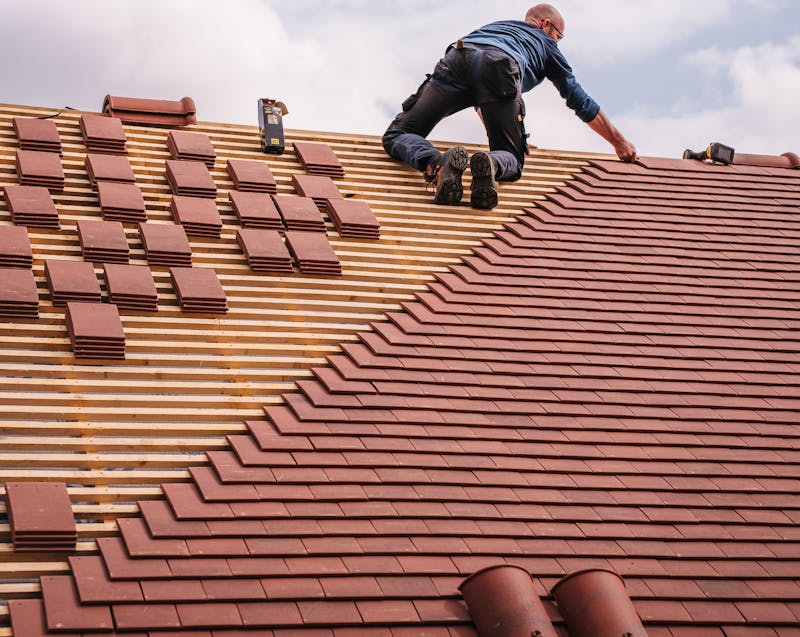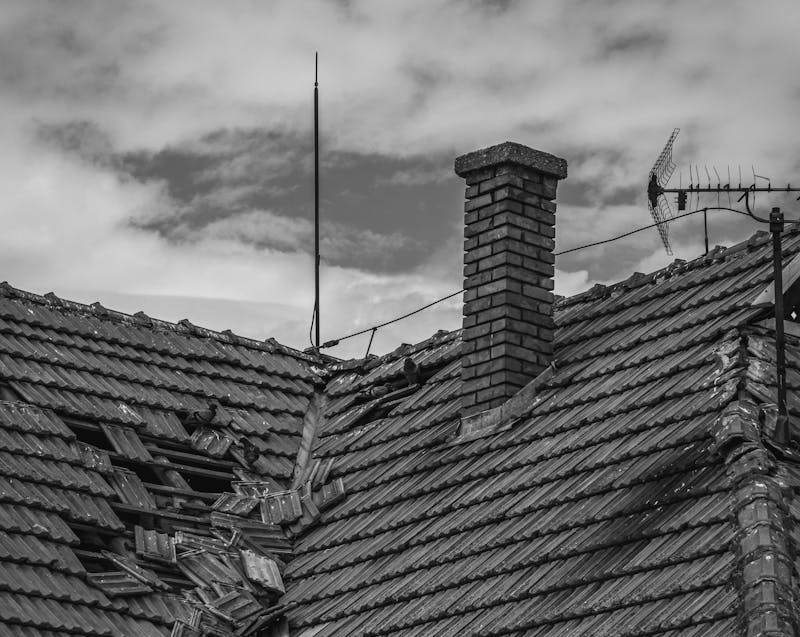- Replacement is necessary when the roof has widespread leaks, deck damage, or has reached the end of its lifespan.
- Cost comparisons should factor in lifespan—restoration is cheaper in the short term, while replacement offers long-term value.
- Different materials (shingles, tiles, metal, and flat membranes) respond differently to restoration and have varying service lives.
- Environmental considerations matter: restoration generates less waste, while replacement allows for energy-efficient upgrades.
- Regular inspections and professional assessments are crucial in making the right choice.
Your roof is more than shelter—it’s an investment in the safety, energy efficiency, and curb appeal of your home. When problems arise, homeowners face a common crossroads: repair and restore the existing roof, or fully replace it. The right choice depends on the condition of the structure, materials used, budget, timeline, and long-term plans for the property.
This article walks you through the technical, financial, and practical considerations so you can make a confident decision. Read on for checklists, red flags, cost and lifespan comparisons, environmental impacts, and a step-by-step decision framework designed specifically for homeowners.
Roof Restoration vs Replacement: What’s the Difference?

Understanding the difference between roof restoration and replacement is the foundation of a smart decision. Restoration refers to repairing, resealing, or upgrading key roof components while keeping the existing deck and most materials in place. It often involves cleaning, resealing flashings, replacing damaged shingles or tiles, and applying protective coatings.
Replacement means removing the old roof system entirely — deck, underlayment, and coverings — and installing a new roofing system from scratch. Each approach has advantages: restoration is usually quicker and less expensive, while replacement provides a longer-term solution and may be necessary when structural components have failed. Knowing which category your situation falls into helps focus inspection and budgeting.
What restoration typically includes
- Cleaning and moss/lichen removal
- Replacing or repairing broken tiles or shingles
- Resealing flashing and penetrations (chimneys, vents, skylights)
- Applying protective or reflective coatings (for certain roof types)
- Minor deck repairs and targeted patching
What replacement typically includes
- Stripping off the old roofing layers down to the deck
- Repairing or replacing damaged decking and underlayment
- Installing new flashing, vents, and ridge components
- Installing the chosen new roofing material (shingles, metal, tiles, membrane)
- Final cleanup and warranty handover
How to Recognize When Restoration Is a Smart Option
Restoration can be a cost-effective way to extend a roof’s life when the core structure is sound. This section helps homeowners recognize situations where restoration not only makes sense but is the prudent choice. Generally, restoration is ideal when damage is localized, the roofing material still has significant remaining life, and the decking and underlayment are in good condition. If your home is in good structural shape, you might be able to buy 5–15 years of useful life with professional restoration work. Restoration also tends to be faster, causes less mess, and often qualifies for lower immediate expenditures—advantages for homeowners who want to preserve value now while postponing a full replacement until a later date.
Common indicators favoring restoration
- Widespread surface wear (faded granules on shingles), but no deck rot
- Isolated cracked or missing tiles rather than structural sagging
- Flashing failures and failed seals around roof penetrations
- Roof age is middle-range for its material (e.g., 8–15 years for shingles)
- No history of multiple prior overlays (too many layers make restoration impractical)
When Replacement Is the Right Call
Some problems can’t be solved with repairs alone. Replacement is appropriate when the roof has reached the end of its service life, when multiple layers of previous roofing are present, or when the deck and underlayment are compromised. Replacement is the most reliable long-term solution when leaks have caused rot, mold, or structural issues, or when you want to change roofing materials (for example, moving from asphalt shingles to metal).
Although replacement carries a higher upfront cost and longer project time, it increases property value, can improve energy performance, and avoids recurring repair cycles. If you plan to stay in the house for many years or are preparing to sell, replacement can often be the smarter lifetime investment.
Replacement red flags
- Recurrent leaks in multiple locations
- Soft or sagging decking visible from the attic
- Excessive shingle granule loss and brittle shingles across the roof
- Multiple roofing layers are already present (creating weight and concealment issues)
- Interior mold, insulation saturation, or structural rot
Cost Comparison: Short-Term vs Long-Term Financial Impact
Cost is often the deciding factor, but it’s important to compare short-term savings from restoration against long-term costs of recurring repairs or early replacement. Restoration typically costs a fraction of replacement—often 30–60% cheaper depending on the roof size and required work. However, restoration’s lifespan extension is usually measured in years, not decades.
Replacement involves a larger initial investment but can add 20–50+ years of life, depending on material choice. When estimating cost-effectiveness, think in terms of “cost per year of useful life” rather than simple sticker price. Also factor in soft costs: disruption, insurance implications, and increased energy savings from newer materials or improved ventilation.
Financial questions to run through
- How many years of life will restoration realistically add?
- What is the cost per year for restoration vs replacement?
- Will replacement lower insurance premiums or increase resale value?
- Are there financing or tax incentives available for certain materials or energy-efficient upgrades?
Lifespan and Material Considerations
Different roofing materials age differently and respond to restoration in varied ways. Asphalt shingles are common and relatively inexpensive, but often benefit less from coatings compared to metal or tile. Metal roofs can be restored by treating corrosion points and resealing seams; tile roofs often allow partial tile replacement plus resealing.
Flat roofs (membranes) may be good candidates for restoration if the membrane can be patched and recoated, but extensive ponding or multiple repairs often push the decision toward replacement. Know your material’s typical service life and how restoration impacts that lifespan when evaluating options.
Typical lifespan by material (approximate)
- Architectural asphalt shingles: 20–30 years
- 3-tab asphalt shingles: 12–20 years
- Metal roofing: 30–50+ years
- Clay/concrete tiles: 50+ years (with proper maintenance)
- EPDM/TPO PVC membranes (flat roofs): 15–30 years, depending on maintenance and coatings
Environmental and Energy Impacts: Which Is Greener?
Environmental impact is a meaningful consideration for many homeowners. Restoration generally generates less waste because it avoids stripping and landfilling the old roofing materials. It can be the greener choice when the existing roof is fundamentally sound. Replacement generates more construction waste but also offers opportunities: installing higher-reflectivity materials, improved insulation, and modern ventilation can reduce energy consumption substantially.
If your goal is net environmental benefit, weigh the waste footprint of replacement against the energy savings and longer life of high-quality new materials. Some municipalities and contractors also offer recycling services for old shingles, which can mitigate waste concerns.
Eco-friendly options to consider
- Recycled shingles
- Cool-roof coatings to reduce heat gain
- Higher R-value underlayment or insulation upgrades during replacement
- Long-life materials like metal or tile to reduce future waste
How to Inspect Your Roof: A Homeowner’s Checklist

A careful inspection will help you decide between restoration and replacement. Some inspections you can start yourself; others require a professional roofer or structural contractor. Safety first: do not climb steep or fragile roofs without proper training and gear.
Attic and interior checks
- Look for water stains, mold, or damaged insulation.
- Inspect decking for soft spots by walking safely or probing boards where accessible.
- Note locations of active drips or discolored areas.
Exterior and roofline checks
- Photograph and document missing, cracked, or curling shingles/tiles.
- Check flashings around chimneys, skylights, and vents for gaps or rust.
- Inspect gutters for unusual granule accumulation or shingle pieces.
- For flat roofs, look for ponding water, blisters, or seam delamination.
When to call a professional
- If you detect structural sagging or rot
- If roof access is unsafe or the building is multi-story
- For a detailed moisture map or infrared scan (to find hidden leaks)
- To obtain written estimates and warranty comparisons
Warranties, Permits, and Contractor Selection
Choosing the right contractor and understanding warranties and permits can be as important as the physical work. Restoration and replacement often carry different warranty structures: restoration work typically comes with workmanship and coating warranties (shorter term), while replacement may include manufacturer warranties on materials plus longer workmanship guarantees. Always ask for written warranties, check local building permit requirements, and verify contractor licensing and insurance. Get at least three detailed quotes—each should list materials, scope, timeline, and warranty terms—so you can compare apples to apples.
Hiring checklist
- Verify contractor license and insurance (liability, workers’ comp)
- Ask for references and recent project photos
- Ensure a written contract with scope, payment schedule, and warranty details
- Confirm who pulls permits and handles inspections
Decision Framework: How to Make the Final Call
Use a simple scoring approach to compare restoration vs replacement across practical factors: roof age, extent of damage, decking condition, budget, long-term plans, and environmental priorities. Assign weight to each factor based on your priorities (for example, longevity might be 30% if you plan to stay long-term).
Add up scores for restoration and replacement to see which option aligns with your goals. Don’t forget to factor in non-financial elements like disruption tolerance and aesthetics. When in doubt, an independent roof inspection by a licensed contractor or building inspector provides clarity—request a written condition report and a recommended course of action.
Quick decision prompts
- Plan to stay 10+ years and roof near end of life → Replacement favored.
- Local, surface-level damage, sound decking, limited budget → Restoration favored.
- Widespread decking rot or mold → Replacement required.
- Environmental/waste concerns and sound structure → Restoration preferred.
Final Thoughts
Choosing between roof restoration and replacement is both a technical and personal decision. Restoration is an excellent, economical option when the roof’s structure is intact and damage is manageable. Replacement is the right investment when structural issues, end-of-life materials, or long-term ownership plans justify the cost.
With a careful inspection, realistic cost-per-year comparisons, and trustworthy contractor advice, homeowners can make a decision that protects their property and their budget. Keep records of inspections and maintenance, and treat your roof as the long-term asset it is—regular care will stretch any roofing dollar further.
